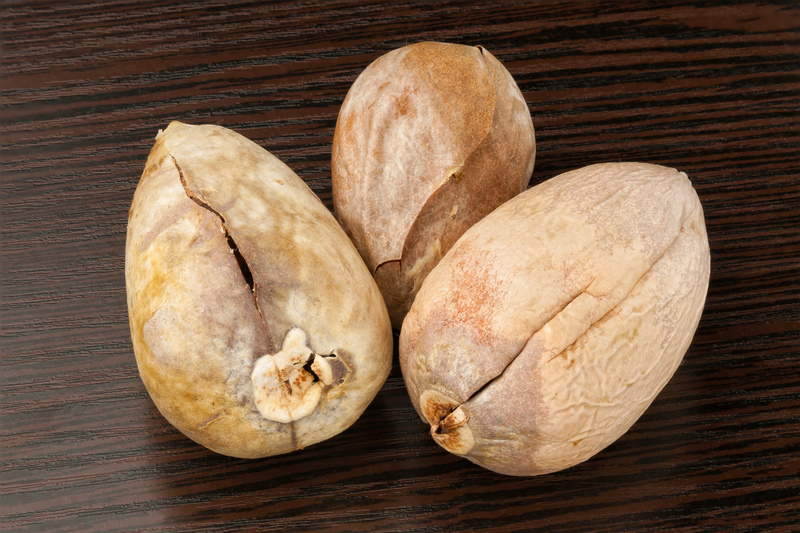9 Dazzling Ground Cover Plants to Boost Your UK Garden's Biodiversity
Posted on 16/05/2025
Enhance Your UK Garden with Diverse Ground Cover Plants
Ground cover plants are more than just an aesthetic addition to your garden; they serve a multitude of purposes from weed suppression to soil conservation. In the UK, these plants are especially vital due to the unique climate conditions. Leveraging ground cover to boost your garden's biodiversity can transform your green space into a haven for local wildlife.


Why Choose Ground Cover Plants?
Before diving into the specific plants, it's important to understand why ground cover plants are beneficial:
- Erosion Control: Their dense root systems help prevent soil erosion.
- Weed Suppression: By covering soil, they limit space for aggressive weeds.
- Climate Adaptability: Many varieties thrive in various UK climates.
- Biodiversity: They provide habitat and nourishment for insects and other wildlife.
1. Creeping Thyme (Thymus serpyllum)
Creeping Thyme is a popular choice for its fragrant aroma and vibrant blooms. This plant is low-growing, making it perfect as a lawn alternative or in between pavers.
- Biodiversity Boost: Attracts bees and other pollinators with its fragrant flowers.
- Thrives in: Well-drained, sunny areas.
- Maintenance: Minimal; drought-resistant once established.
2. Bugleweed (Ajuga reptans)
Recognized for its striking blue flower spikes, Bugleweed offers color and coverage.
- Biodiversity Boost: Ideal for pollinators, provides habitat under its thick foliage.
- Thrives in: Moist, shaded locations.
- Maintenance: Tolerates different soil types, spreads easily.
3. Hosta (Hosta spp.)
The Hosta plant, with its lush, large leaves, is excellent for adding texture and coverage.
- Biodiversity Boost: Slugs and snails love them, which in turn attract birds.
- Thrives in: Shaded or partially shaded areas.
- Maintenance: Requires regular watering; thrives with mulch.
4. Sweet Woodruff (Galium odoratum)
Revered for its fragrance, Sweet Woodruff is perfect for shaded areas where few ground covers flourish.
- Biodiversity Boost: Blossoms attract pollinators like bees.
- Thrives in: Cool, shaded, and moist conditions.
- Maintenance: Low; spreads easily in favorable conditions.
5. Lamb's Ear (Stachys byzantina)
Lamb's Ear is beloved for its soft, silvery foliage, offering a velvety texture that contrasts with other perennials.
- Biodiversity Boost: Flower spikes attract pollinators.
- Thrives in: Sunny locations with well-drained soil.
- Maintenance: Drought-resistant and low-maintenance.
6. Periwinkle (Vinca minor)
A staple ground cover in UK gardens, Periwinkle provides evergreen cover with vibrant blooms.
- Biodiversity Boost: Provides shelter year-round for various garden creatures.
- Thrives in: Both sun and shade, adaptable to different conditions.
- Maintenance: Easy; keep in check to prevent aggressive spread.
7. Snow-in-Summer (Cerastium tomentosum)
Aptly named, Snow-in-Summer offers a blanket of white flowers over silvery foliage in late spring.
- Biodiversity Boost: Attracts bees and other pollinating insects.
- Thrives in: Well-drained, sunny spots.
- Maintenance: Requires very little attention once established.
8. Wild Strawberry (Fragaria vesca)
Offering both aesthetic appeal and delicious fruit, Wild Strawberries are a charming addition to any garden space.
- Biodiversity Boost: Fruit attracts birds and other wildlife.
- Thrives in: Partial shade with moist soil.
- Maintenance: Easy to grow, spreads rapidly under the right conditions.
9. Sedum (Sedum spp.)
Sedum plants are a succulent option that can withstand harsh conditions and drought.
- Biodiversity Boost: Their flowers are excellent for attracting butterflies.
- Thrives in: Rock gardens, well-drained soil, full sun to partial shade.
- Maintenance: Very low, requires minimal watering.
Conclusion: Crafting a Biodiverse UK Garden
Utilizing ground cover plants is a strategic way to enhance not only the beauty of your UK garden but also its ecosystem services. By selecting a variety of these resilient plants, you can create a lush, dynamic space that naturally supports local wildlife. Encouraging biodiversity does not only benefit the world's ecology--it also enriches our daily garden experiences.
Integrate these spectacular options into your garden design for a more sustainable and captivating landscape year-round.

